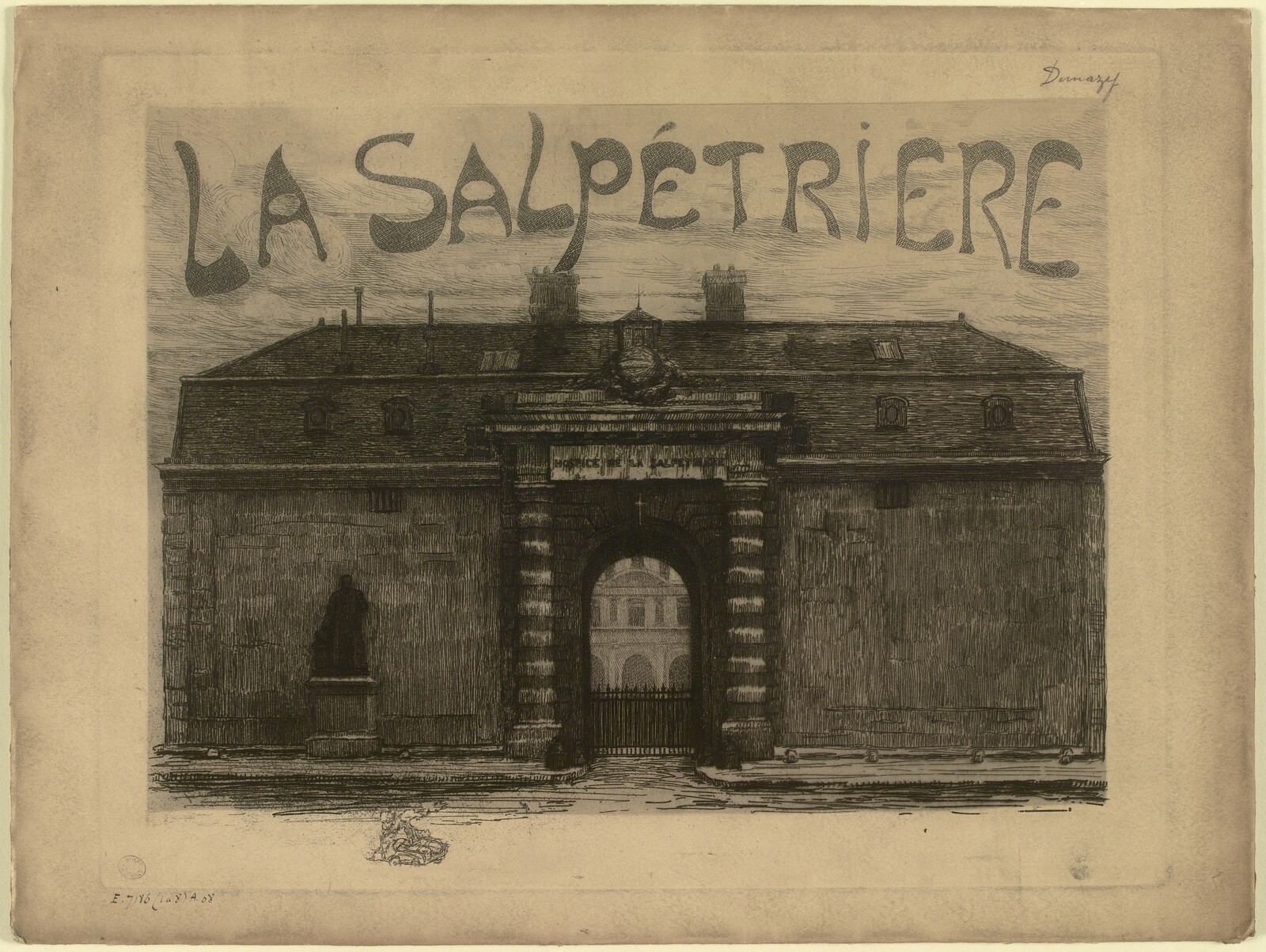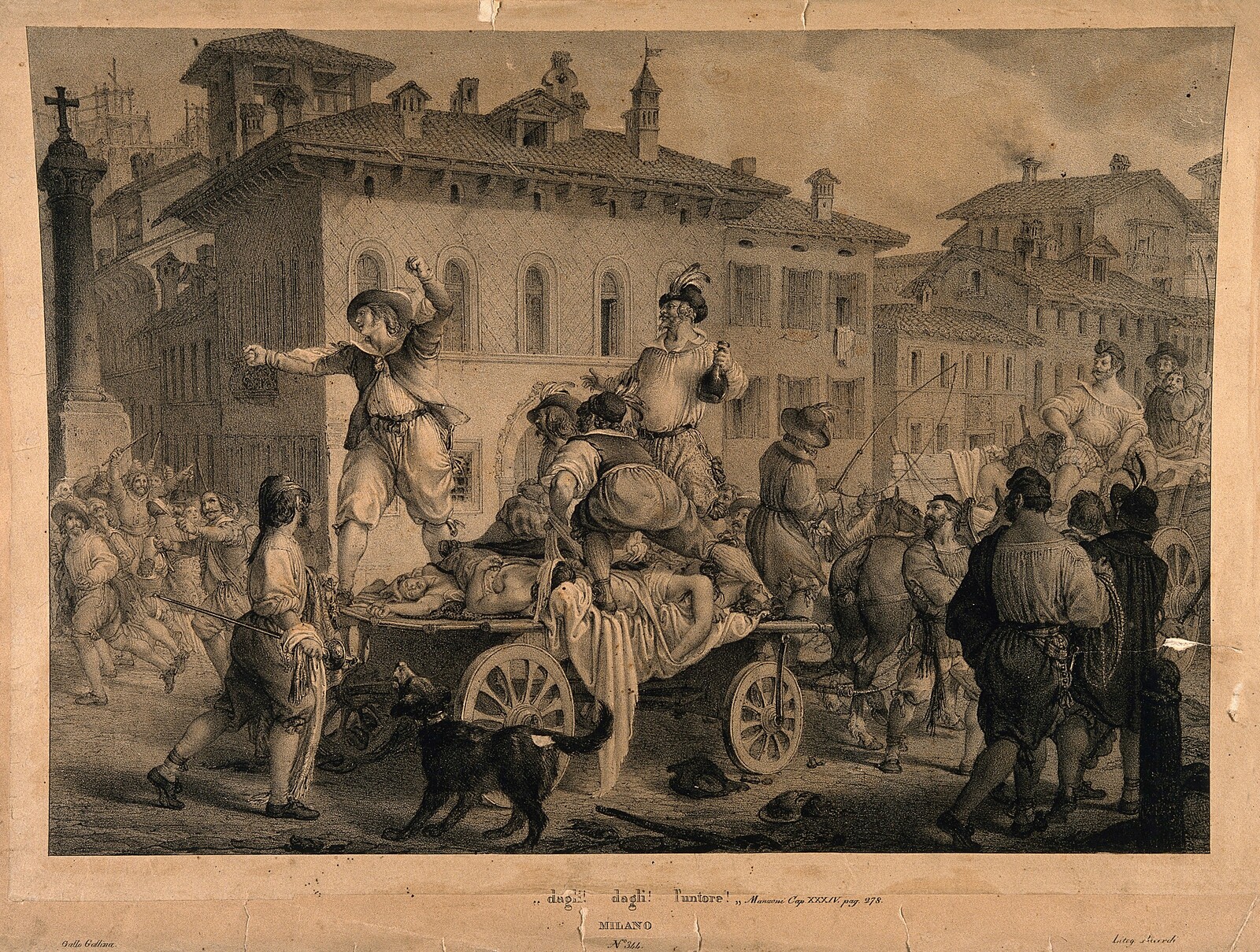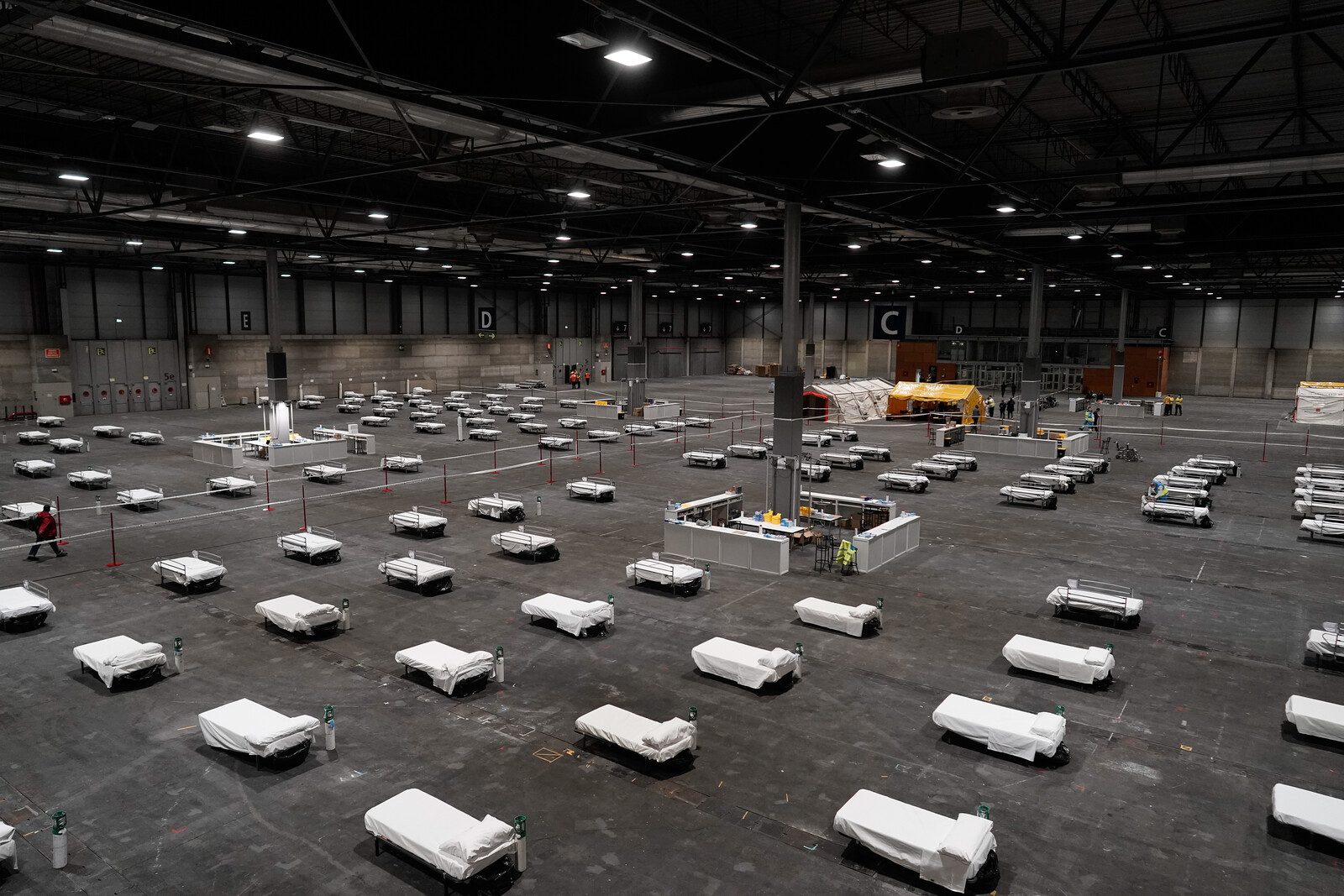In May 1919, the literary magazine Xin qingnian / La Jeunesse published a short story by Chinese writer Lu Xun called “Medicine,” in which Old Chuan and his wife save every penny to buy a folk medicine cure—a roll of steamed bread soaked with blood—for their son, who is dying of tuberculosis.1 As the reader soon learns, the blood is from a young radical who was executed for revolutionary activities. The image of the bread dripping with blood does not just represent the superstition of traditional Chinese medicine, but is also a metaphor for the political ignorance of the public. As a medical student-turned-writer who studied in Japan, Lu Xun saw a profound interconnection between the physical and social illnesses of his time. Looming large at the time was the Xinhai Revolution of 1911 that overthrew the Qing dynasty and resulted, in 1928, in the establishment of the Nationalist Party (Kuomintang, KMT) and the Republic of China, which quickly fell into political chaos and internecine warfare. In this regard, “Medicine” asks if the Revolution was really a cure for the ailing nation when it still conformed to traditional values.
The publication of “Medicine” coincided with the onset of the May Fourth Movement. It arose from massive student protests in Beijing against the government’s inaction with respect to the Treaty of Versailles, which allowed Japan to take over territories in eastern China that had previously been colonized by Germany. The outbreak of student protests in the following months marked the culmination of years of intense cultural debates known as the New Culture Movement. Disillusioned with Confucianism and the failures of the Nationalist government, intellectuals called for the reformation of the Chinese language and the emancipation of women, and promoted Western ideals like democracy and science. In many Chinese political and literary texts, social problems were medicalized in order to decry China’s failure to catch up with a modernizing and globalizing world.2 For Chinese reformers at the time, diseases like tuberculosis became the perfect arena for questioning Chinese medicine in particular, and traditional Chinese culture in general.
While tuberculosis helped to modernize architecture in Europe, it also prompted a group of Chinese doctors and architects to build one of the earliest examples of International Style architecture in China: the Hongqiao Sanatorium, completed in 1934 in Shanghai.3 Unlike most of contemporary architectural production at the time, which was built in Chinese, neoclassical, art-deco, or other revival styles, the Hongqiao Sanatorium is regarded as “the most representative work of modernist architecture” in Republican China.4 For many architectural historians, the Sanatorium marked a brief period of “serious modernism” in Chinese architectural history, characterized by the emergence of the idea of “functionalism” in tandem with the first translations and studies of Western architects such as Le Corbusier and Bruno Taut.5


A bird’s eye view of the Hongqiao Sanatorium. Source: Zhongguo jianzhu/Chinese architect 2, no. 5 (1934): 3.
This historiographical desire for a “pure” modernism (i.e. International Style) can be read as a response to the predominant nationalism in early-twentieth-century China that confined the discourse of architecture to the nation’s cultural identity. When China’s first generation of modern architects returned home after studying in the USA, Europe, or Japan in the 1920s and 1930s, most collaborated closely with the government, which was struggling at the time to centralize power through nation building projects.6 To further create a sense of national sovereignty and belonging, in 1929 the Nationalist government officially mandated an “inherently national style” for all public buildings, which led Western architectural styles to become increasingly associated with foreign settlements, imperialism, and the loss of economic and cultural autonomy.7 State architects fashioned this traditional Chinese style with a language drawn from their Beaux-Arts training and other Western architectural theories.8
A similar nationalist sentiment can also be discerned in the discourse of medicine. In 1928, following the lobbying of John B. Grant at the Rockefeller Foundation and a group of practitioners of Western medicine, a proposal was unanimously passed to abolish the practice of Chinese medicine at the first National Conference on Public Health. However, the resolution quickly backfired and mobilized the previously unorganized practitioners of Chinese medicine into a National Medicine Movement (guoyi yundong). Motivated by the need for a uniquely Chinese identity in the midst of social and cultural convulsions, the National Medicine Movement actively competed with Western medicine and successfully forged a closer alliance with the Nationalist KMT.9
Seen in this light, the flat roofs and stepped terraces of the Hongqiao Sanatorium represent a remarkable break from the predominant nationalist discourse in the name of public health and modernization. The Sanatorium was conceived by the father and son Ding Fubao and Ding Huikang, both of whom were members of the newly founded National Anti-Tuberculosis Association of China (Zhongguo Fanglao Xiehui, NATAC). Ding Fubao was a doctor, translator, and one of the earliest reformers of Chinese medicine.10 After a study trip to Japan in 1909, he became a supporter of Westernizing medicine in China and established the Sino-Western Medical Research Society. From 1912 on he devoted himself to commercially publishing a popular series of medical guides called Mr. Ding’s Medical Compendium comprising translations from Japanese texts on Western medicine. Deeply influenced by his father, Ding Huikang received his doctorate of medicine from the University of Hamburg in 1924, specializing in tuberculosis and pneumonic diseases.
Despite the establishment of China’s first Ministry of Health in 1928, there was no public health-centered policy throughout the 1920s and 1930s.11 Tuberculosis in particular was not considered a public health crisis until the campaigns of NATAC.12 Established in Shanghai in October 1933 and independent from the government, the National Anti-Tuberculosis Association of China, an NGO avant la lettre, was the only organization active in the 1930s and 1940s dedicated to the elimination of the tuberculosis.13 NATAC’s efforts included week-long educational campaigns, radio talks, and public lectures, as well as founding clinical facilities and increasing beds across Shanghai for tuberculosis patients.14
NATAC produced and publicized often exaggerated statistics in popular newspapers and magazines to make the crisis “visible.” As Medical historian Sean Hsiang-lin Lei has argued, the pathology of the emergence of the tuberculosis crisis in Republican China is not mycobacterium tuberculosis, but the internalization of the colonial gaze that objectified the Chinese as the unhygienic, uncivilized, and unhealthy Other.15 Tuberculosis became associated with traditional lifestyles within an extended family. In her article “The Chinese and Tuberculosis,” Ge Chenghui, one of first woman doctors in China and a graduate of Yale Medical School, identified three “unhygienic” habits within the family as causes of contagion: sharing meals, sharing the bed, and sleeping with closed windows.16 In this sense, Western medical thinking represented not only scientific and epistemological difference to Chinese tradition, but also cultural difference. By appropriating the tuberculosis crisis as a cultural critique of tradition, the NATAC group appointed themselves as the “doctors of enlightenment” and thereby worked to create a modern, hygienic subject.


General and Mayor of Shanghai Wu Tiecheng cut the ribbon at the opening ceremony. Source: Tu hua chen bao/The Chen Pao Miscellany 109 (1934).
Inaugurated on June 17, 1934, the Hongqiao Sanatorium became a media sensation. Photos of General and Mayor of Shanghai Wu Tiecheng with a crowd of celebrities, politicians, and doctors were reproduced in newspapers and magazines throughout the country.17 The sanatorium, advertised as “the latest and most up-to-date” medical facility in Shanghai and the best of its kind in East Asia, instantly became a source of national pride and a tourist attraction, drawing national politicians like Cai Yuanpei and Sun Ke (son of Sun Yat-sen) for visits.18 Located in the suburbs to the west of Shanghai and surrounded by small farms and gardens, the sanatorium claimed to offer peace and tranquility to the sick. Constructed in reinforced concrete and oriented to the south, the sanatorium consists of one four-floor and one single-story building. Together they provided thirty-nine wards, all of which were directly connected to balconies, allowing patients to receive sunlight at any time during the day.
The facilities’ “splendid equipment,” as Mayor Wu remarked, included hot and cold running water, electricity, air conditioning, UV light-permitting windows, and modern furniture. In addition to sun-bathing rooms, operation rooms, sanitation rooms, observation rooms, and labs, the sanatorium provided recreation spaces, including a dining hall, a lounge, a library, a music room, and a kitchen. All of the hallways and corridors were covered with rubber flooring imported from the Netherlands, which was intended to reduce the noise of foot traffic. It was equipped with the most advanced light therapy machines and ultrasound (or short-wave diathermy) therapy machines imported from Germany, as well as X-ray machines and shadowless surgical operation lights.19

The Hongqiao Sanatorium differs from the European model in the partitioning of the terraces. Source: Zhongguo jianzhu/Chinese architect 2, no. 5 (1934): 16.

The lobby of the main building. The Sanatorium prided itself on its electric lighting, rubber flooring, and modern interior design. Source: Zhongguo jianzhu/Chinese architect 2, no. 5 (1934): 24.

A separate building designed for cheaper wards. Source: Zhongguo jianzhu/Chinese architect 2, no. 5 (1934): 12.

Inside the “first-class” ward. Source: Zhongguo jianzhu/Chinese architect 2, no. 5 (1934): 33.
The Hongqiao Sanatorium differs from the European model in the partitioning of the terraces. Source: Zhongguo jianzhu/Chinese architect 2, no. 5 (1934): 16.
Designed by Xi Fuquan, who studied in Germany from 1922 to 1929, the building was described in The China Times as “great” and “cubist.”20 Visitors expressed amazement at the terraces and reinforced concrete structure, as well as the rounded edges and corners in the interior designed to prevent the accumulation of dust.21 While bearing many similarities, the Hongqiao Sanatorium differs from the European model in the partitioning of the terraces. In European sanatoria, such as the County Hospital in Waiblingen by Richard Döcker or Alvar and Aino Aalto’s Paimio Sanatorium, terraces usually ran continuously along the building. But here, partitions separated the outdoor space into individual terraces. As Mayor Wu perceptively commented: “the planning of the institution made it possible for every patient to enjoy privacy.”22 Indeed, individual privacy is meticulously represented throughout the building. In addition to the partitions, the terraces are set back in such a way that a patient upstairs would not be able to look out and easily see a patient downstairs, and vice versa. And while the costs to stay at the Hongqiao Sanatorium were low compared with other contemporary medical facilities in Shanghai, it was still unaffordable for the majority of the population. The sanatorium was organized hierarchically, with “first-class wards” having in-suite private bathrooms, and standard, cheaper wards located in a separate structure across the lawn from the main building.23
After its inauguration, the Hongqiao Sanatorium continued to be publicized. Its representation in professional medical and architectural journals mainly covered how the sanatorium contributes to contemporary discourses of medicine and architecture. But its media presence in popular magazines and newspapers were primarily promotions placed by the sanatorium itself. One photo showcased X-ray equipment with a female nurse next to it, thereby associating modern technology with the trope of the modern woman.24 Another double-page feature titled “Patients’ Paradise” presents the sanatorium as a resort rather than a hospital with an array of both exterior and interior photographs. It would also often appear in the news that a celebrity or politician was a patient at the Hongqiao Sanatorium.

An advertisement for the Sanatorium, describing it as “a paradise for patients.” Source: Dazhong huabao/The Cosmopolitan 14 (1934): 23.
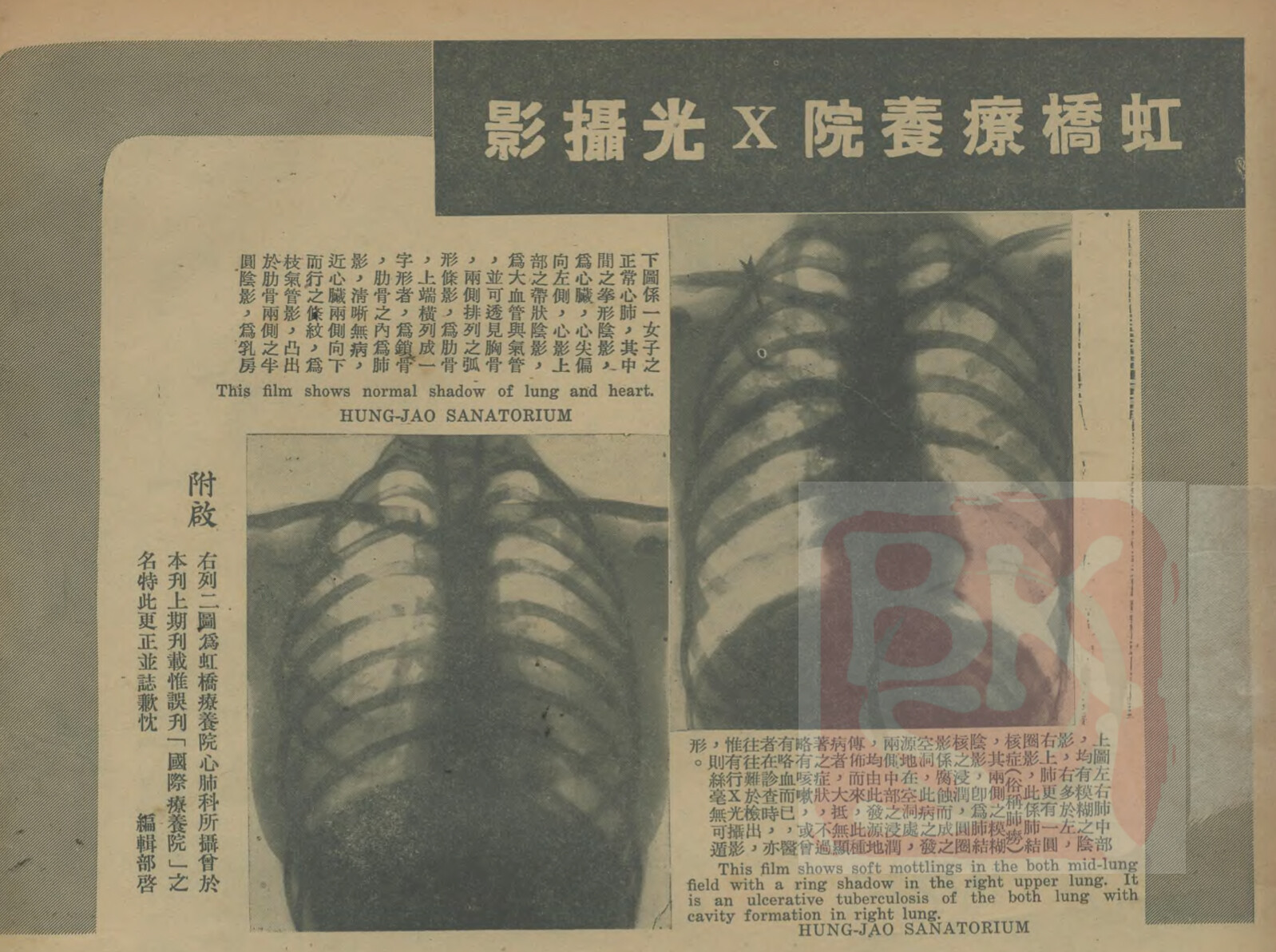
X-ray images of healthy and infected lungs, published in a popular magazine. Source: Zhanwang/Look Monthly 19 (December 1940).
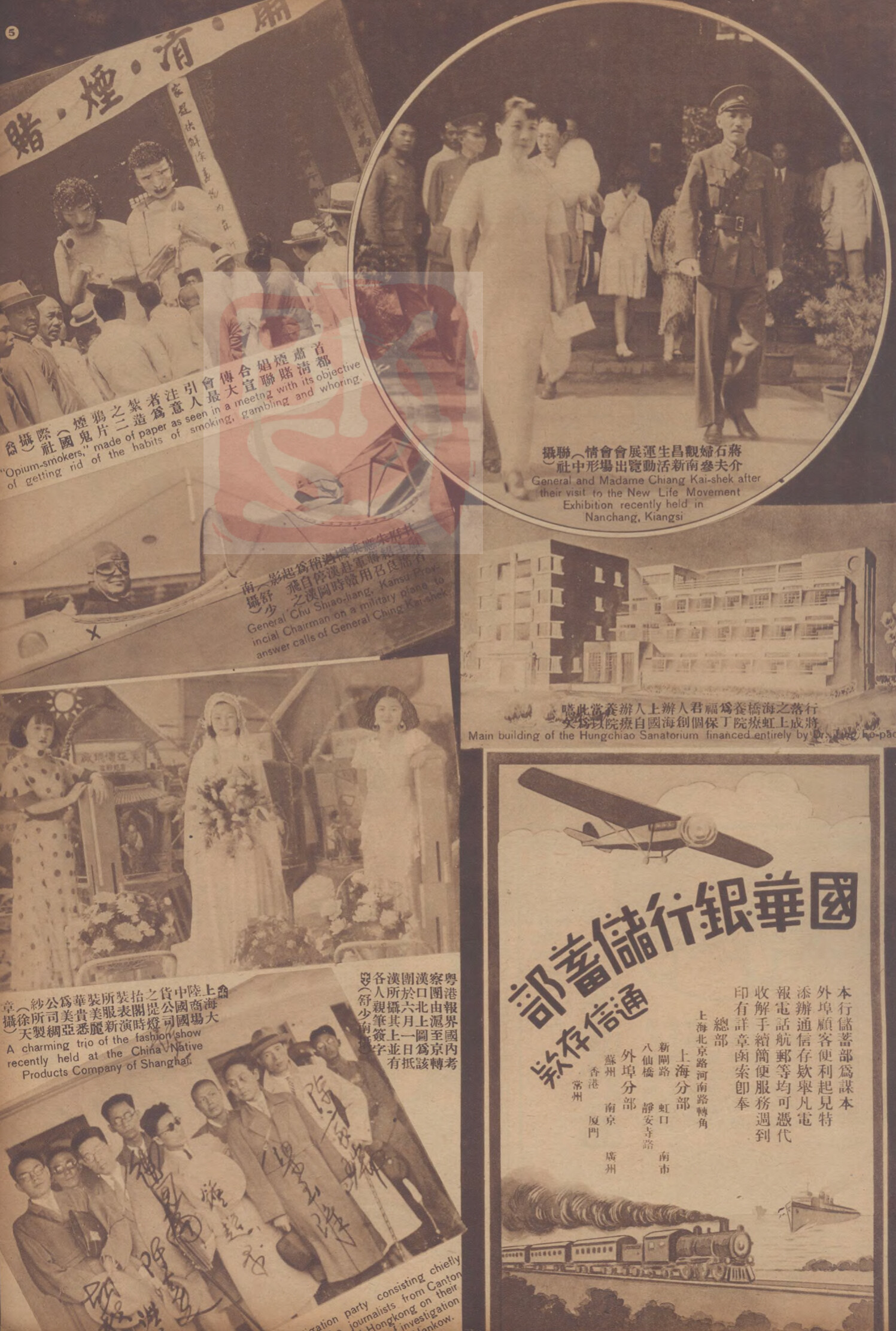
The news of the opening of the Sanatorium, juxtaposed to other national events. Source: Zhong hua/The China Pictorial 18 (1934).
An advertisement for the Sanatorium, describing it as “a paradise for patients.” Source: Dazhong huabao/The Cosmopolitan 14 (1934): 23.
The tuberculosis crisis in Republican China ultimately elevated questions of “hygiene” from the level of the personal to the national and tied “hygiene” to China’s place in the global order. The Hongqiao Sanatorium represents an exceptional case in which the private sector replaced the state public health control as a leading force in the politicization of a disease. Emerging out of the constant struggles and confrontations between Chinese and Western medicine and architecture, the Sanatorium adds a colonial twist to the often-cited alliance between modern architects and doctors: Western medicine helped architects overcome the limits of the predominant nationalistic discourse of “the Chinese style,” while Western architectural modernism functioned as a visual rhetoric that promoted the professional image of Western medicine. As an unambiguous rejection of Chinese tradition (both architectural and medical), the Sanatorium could not have been realized without this alliance as well as the power vacuum left by the lack of state-controlled public health measures. Its adaptation and appropriation of Western forms and ideologies allowed the NATAC doctors and architects to claim authority over China’s modernization processes at a time when the state power was still weak, confounding the binary narratives of imperialist domination and anti-imperialist resistance.
But this transient independence from nationalism and “serious modernism” ended with the onset of the Sino-Japanese war in 1937, which forced the medical team to abandon the Sanatorium. It faded into oblivion as the Communist Party took over in 1949 and nationalized the health care system. While the building is no more today, the tension between Chinese and Western medicine continues to exist in a new and yet equally politicized fashion. Although Chinese medicine has largely been integrated into a techno-scientific health care system, it remains a nationalistic symbol, and once again came to the fore when China’s leaders promoted it in treating Covid-19, exporting it to countries around the world including Pakistan, Kenya, Iran, the Netherlands, and Italy, as part of relief missions intended to boost China’s soft power.25
Lu Xun, “Yao” (“Medicine”), Xin Qingnian / La Jeunesse (Xin Qingnian) 6, no. 5 (1919), unpaginated.
Carlos Rojas, Homesickness: Culture, Contagion and National Transformation in Modern China (Cambridge, MA: Harvard University Press, 2015); Yang Nianqun, Remaking Patients: Space Politics under the Conflict between Chinese and Western Medicine (1832-1985) (New York: Peter Lang, 2020).
Beatriz Colomina, X-Ray Architecture (Zürich: Lars Müller Publishers, 2019).
Yongyi Lu and Yan Chen, “The Idea and Form of Functionalism in early Chinese Modern Architecture: A Case Study on Hongqiao Sanatorium in Shanghai,” Jianzhu shi (October 2017), 49–58.
Jianfei Zhu, Architecture of Modern China (London; New York: Routledge, 2009), 71.
Although the Qing dynasty was toppled in 1911, China was not unified until 1928, when the KMT was finally able to consolidate its control over most of the country and relocated the capital from Beijing to Nanjing, ushering in an era of relative stability before the outbreak of the Sino-Japanese war in 1937. The notion of the architect as an individual artist did not exist in China before the twentieth century. The emergence of the architectural profession is also manifested in an epistemological shift of the concept of architecture. The traditional term for architecture, yingzao, was replaced by a new term, jianzhu, to emphasize the new notions of architecture as an art, a discipline and a profession (as opposed to a craft).
Lai Delin, Zhongguo Jindai Jianzhu Shi Yanjiu (Studies in Modern Chinese Architectural History) (Beijing, Qinghua Daxue Chubanshe, 2007).
To be clear, this reinvented “Chinese architectural tradition” is a modern construction underpinned by the Beaux-Arts tradition and various Western architectural theories such as structural rationalism and organicism, and its development involved a history of orientalist scholarship and a legitimizing process in which Western architecture was taken as the universal point of reference. However, it has been deemed to be “traditional” by reformers and historians in pursuit of a Western-centric notion of modernity. Chinese Architecture and the Beaux-Arts, Jeffrey W. Cody, Nancy S. Steinhardt, and Tony Atkin, eds. (Honolulu: University of Hawaiʻi Press, 2011).
Sean Hsiang-lin Lei, Neither Donkey Nor Horse: Medicine in the Struggle over China’s Modernity (Chicago; London: The University of Chicago Press, 2014), 116.
Bridie Andrews, The Making of Modern Chinese Medicine, 1850-1960 (Vancouver: UBC Press, 2014), 122–133.
Lei, “Habituating Individuality: The Framing of Tuberculosis and Its Material Solutions in Republican China,” 255.
In his 1923 proposal for creating a department of hygiene at the Peking Union Medical College (PUMC), John B. Grant, a professor at PUMC and the representative of the International Health Board of the Rockefeller Foundation, argued against implementing tuberculosis control at the early stage of managing public health in China. While Grant estimated that China had an extremely high death rate of fifteen per thousand, he maintained: “In China, where funds and personnel are limited, it would be unwise to concentrate inadequate resources on tuberculosis until the attack on the more easily controllable gastro-intestinal diseases had been well organized.” This proposal was readily accepted by the government. John B. Grant, “A Proposal for a Department of Hygiene” (1923), Rockefeller Foundation Archives, Rockefeller Archive Center, Sleepy Hollow, New York (hereafter RAC), box 75, folder 531, p. 17. Quoted in Sean Hsiang-lin Lei, “Habituating Individuality: The Framing of Tuberculosis and Its Material Solutions in Republican China.” Bulletin of the History of Medicine 84, no. 2 (2010): 253.
Ibid., 256.
Despite being called “national,” the range of their impact was relatively local and concentrated in the Shanghai region.
Lei, “Habituating Individuality: The Framing of Tuberculosis and Its Material Solutions in Republican China.”
Ge Chenghui, “Zhongguoren yu jiehebing” (The Chinese and tuberculosis), Kexue (Science) 10 no. 5 (1935): 587–96. Quoted in Lei.
“New Sanatorium Opened, Hungjao Institution Presents Many Modern Features,” The North-China Herald and Supreme Court & Consular Gazette, June 20, 1934: 430.
The China Times (June 16, 1934), 2.
The China Times (June 10, 1934), 9.
Fuquan studied under the name Fohzien Godfrey Ede, he received his Diploma in engineering from Technische Hochschule zu Darmstadt in 1926, and his doctorate in engineering under the direction of architectural historian and Sinologist Ernst Boerschmann from Technische Hochschule zu Charlottenburg in 1929. Eduard Kögel, “Early German Research in Ancient Chinese Architecture (1900–1930),” Berliner Chinahefte/Chinese History and Society 39 (2011): 81–91.
Shi shi xin bao, December 21, 1934.
“New Sanatorium Opened, Hungjao Institution Presents Many Modern Features,” 430.
Shi shi xin bao, June 26, 1934.
Alys Eve Weinbaum, Lynn M. Thomas, Priti Ramamurthy, Uta G. Poiger, Madeleine Yue Dong, and Tani Barlow, eds., The Modern Girl Around the World: Consumption, Modernity, and Globalization (North Carolina: Duke University Press, 2008.)
Syed Raza Hassan, “Pakistan says trial of Chinese traditional medicine for COVID-19 successful,” Reuters (Jan. 17, 2022), ➝; Zhuang Pinghui, “World Health Organization Chief Given Report on Use of Traditional Chinese Medicine in Fighting Covid-19,” South China Morning Post (Jan. 21, 2022), ➝; Victoria Amunga, “China Exports Its Traditional Medicine to Africa,” VOA News (Jan. 21, 2022), ➝; Ian Johnson, “Chinese Medicine in the Covid Wards,” The New York Review (Nov. 4, 2021), ➝.
Sick Architecture is a collaboration between Beatriz Colomina, e-flux Architecture, CIVA Brussels, and the Princeton University Ph.D. Program in the History and Theory of Architecture, with the support of the Rapid Response David A. Gardner ’69 Magic Grant from the Humanities Council and the Program in Media and Modernity at Princeton University.



















